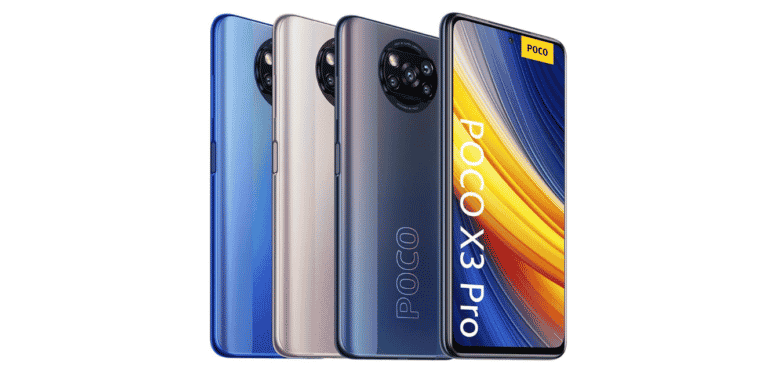The Xiaomi Poco X3 Pro is simply an enhanced version of the Poco X3 NFC from 2020. It’s nearly identical to that phone, in fact, but it slightly rebalances its features to include an even faster computer and a few other changes, while sacrificing a little on the camera front.
The X3 NFC was the cheap phone of 2020, and the Pro outperforms it in enough areas to warrant a recommendation. It may be more divisive than its predecessor, doubling down on its virtues while improving on its shortcomings. This is a smartphone about pure power more than ever, giving the finest performance you can ask for at the price, but competitors are generally thinner, lighter, and shoot better images.
What will you see here?
Design:
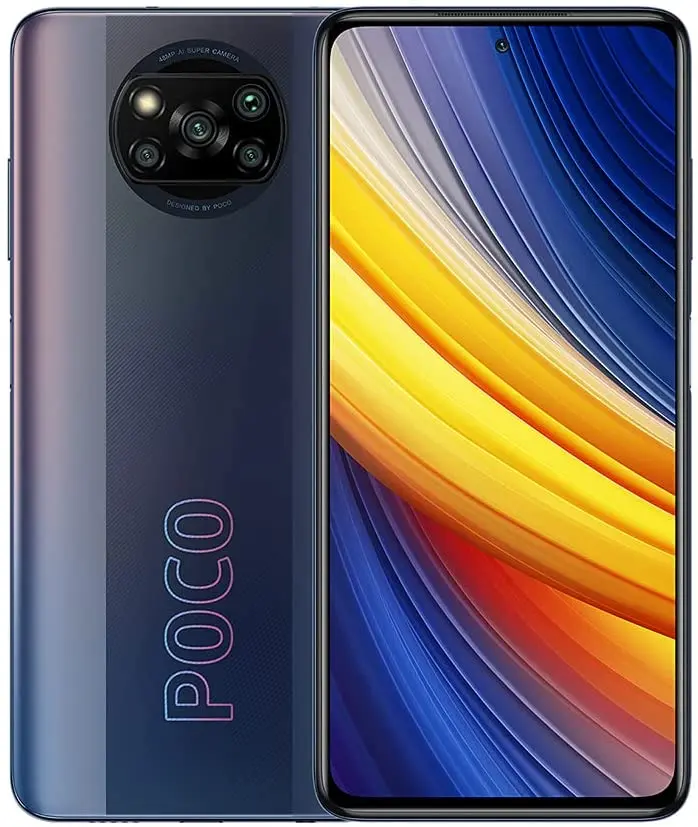
Aside from a new selection of colors, the design of the X3 NFC has remained mostly unchanged from the original. Unfortunately, this implies the same set of issues: the X3 Pro is large, with a 6.67in the display; it’s clunky, at 9.4mm thick and 215g; and it’s ugly, with a gigantic Poco logo splashed on the backside.
But it’s not all horrible. The IP53 classification returns, providing the phone with acceptable dust and water protection for a low-cost phone – even with a headphone jack – while an update to Gorilla Glass 6 should make the display more robust. The frame is still made of aluminum, with a plastic back and this is one of the phones that truly feels cheap.
There are three different colors to choose from. Phantom Black is a black finish with faint blue and orange tones flowing through it, whereas Metal Bronze and Frost Blue are much more straightforward. The new finishes are pleasant, but the X3 Pro’s design remains its most serious flaw. It’s hefty, thick, and, because of the Poco logo and plastic finish, it seems and feels cheap. It’s not bad, but comparable cost phones from Realme and Oppo – or even Xiaomi’s other phone lines – look a lot nicer.
Poco X3 Pro

The screen is an obvious strength here, as long as you’re okay with it being very large at 6.67in.
This is an LCD panel, not an OLED, with a 24001080 FHD+ resolution. It does, however, offer a 120Hz refresh rate and a 240Hz touch response rate, both of which would appeal to anyone who spends a lot of time gaming on their phone.
Even better, the refresh rate can automatically fluctuate between five rates, from 30Hz to 120Hz, allowing the screen to operate a little slower to conserve battery life.
The colors are brilliant and the display is bright and powerful. You won’t get the fantastic contrast or vibrant colors that OLED can provide, but the compromise for a faster refresh rate at this pricing is a wise one for potential X3 Pro consumers. This is a choice that, such as the rest of the phone, prioritizes sheer performance and gaming capability above frills like pro-grade color fidelity.
Performance of Poco X3 Pro
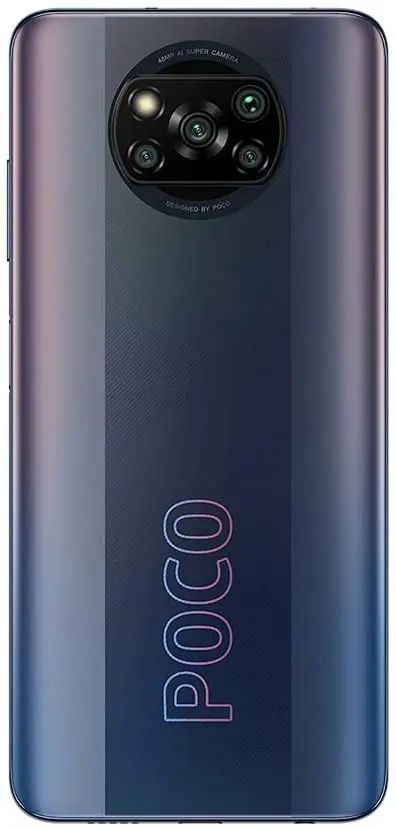
The X3 Pro was revealed with its CPU, the Qualcomm Snapdragon 860, which made its premiere here. This is a beefed-up version of the Snapdragon 855, which powered the majority of the top flagship phones in 2019.
Two years on, you’d think it’d show its age – and it does, to some extent, by only supporting 4G rather than 5G – but even older flagship silicon is still quicker than this year’s mid-range CPUs.Poco offers the Snapdragon 860 with 6GB or 8GB of RAM and 128GB or 256GB of storage. However, there’s also a MicroSD slot for additional storage. Aside from storage, The RAM upgrade if you can afford it — the price difference is only £20 in the UK, and the long-term speed advantages and future-proofing should make it well worth it.
In terms of security, a fingerprint reader is integrated into the power button on the phone’s side. This may not have the sex appeal of an under-display scanner, but physical ones are generally faster and more dependable — this one included. You may also utilize the selfie camera for a less secure two-dimensional face unlock.
Cameras

Speaking of which, the cameras are the one aspect of the Poco X3 Pro that is noticeably inferior to the X3 NFC.
The rear arrangement is similar in general but differs in the specifics. There are four lenses included, but two of them are 2Mp: a macro lens and a depth sensor. The other two cameras are a 48Mp primary camera and an 8Mp ultra-wide camera.
To be honest, the main camera isn’t horrible. The decreased quality and smaller sensor area are offset significantly by an increased f/1.8 aperture, and the pictures in daylight are actually rather good. There is no optical zoom stabilization (OIS), so there will be some hand-shake, but the colors are vibrant, and the 48Mp sensor is large enough to capture a lot of information.
The primary camera’s deficiencies become apparent in low light, with washed-out colors and diminished detail and sharpness. Photos are still usable, but not nearly as Instagram-ready. Night mode improves, but the results are still inferior to those of similarly priced phones.
The ultrawide is more vexing. Even in ideal lighting, images seem soft, with significantly diminished clarity and fading color when compared to the primary lens. This only worsens in low light, with white balancing and exposure issues added to the mix. To be honest, this wide-angle camera stinks in low light.
The selfie shooter is likewise rather basic, but it does the job. It can capture pretty detailed photos at 20Mp, but the f/2.2 aperture and small sensor cause it to struggle outside of truly optimum lighting circumstances.
Battery & charging
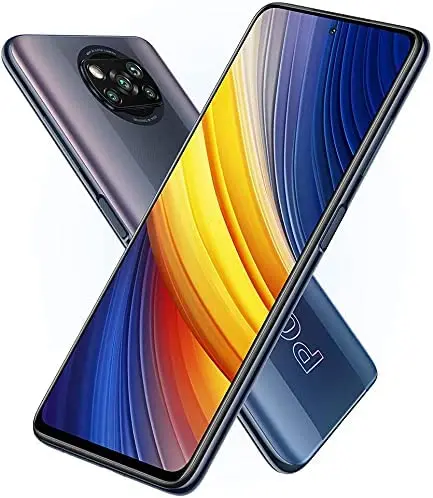
The 5160mAh battery inside is rather large, and it contributes to the overall weight of the phone. In tests, it actually lasted a few hours shorter than the X3 NFC, although having the same battery capacity — maybe as a result of a more power-hungry chipset.
Regardless, in practical use, this provides a remarkable lifespan. Two full days out of the phone with casual use, and heavy users and games should have no trouble extending it out to cover the day.
The USB-C charging isn’t the quickest around at 33W, but it’s still very quick. 15 minutes was enough to top up the phone by 28%, and half an hour netted me 58% – comfortably enough for a full day’s use based on my habits.
Software:
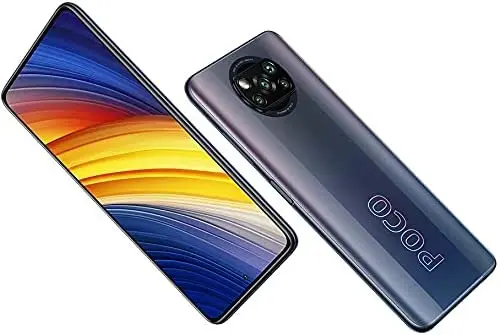
The X3 Pro comes standard with Android 11 and Xiaomi’s MIUI 12 overlay. Xiaomi hasn’t said how many system upgrades the phone will receive, but based on the company’s track record, it will most likely receive the next two Android version releases.
There’s still a lot of variety among Android skins, and to say that MIUI is still one of my least favorite. The vibrant, colorful UI makes navigating system settings difficult, and a confused arrangement means individual settings items never appear to be where you want them to be.
There are lots of adjustabilities after you figure out how everything works, but there are some perplexing constraints here. For example, the ‘floating windows’ functionality allows you to slide alerts down to launch apps in their own mini-tab on-screen. This is far too simple to activate when you only want to open a notice, far too difficult to shut the floating window and return to what you’re doing, and far too difficult to turn off totally.
The final conclusion is that this isn’t the finest Android experience available, but that’s a question of personal preference. It also has the most recent software version and should last another year or two.
Price & availability
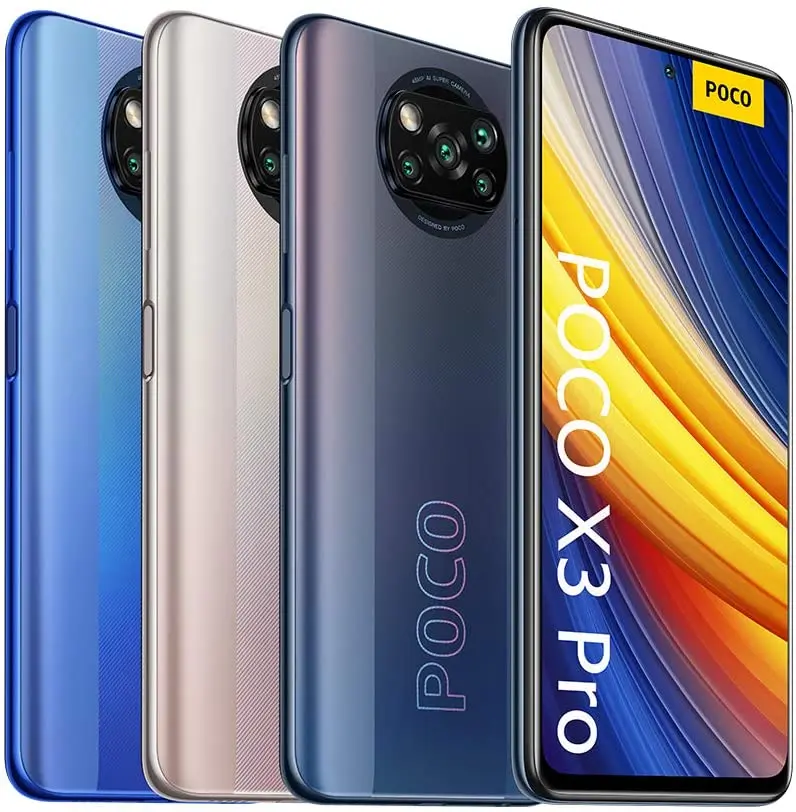
The Poco X3 Pro starts at £229/€249 with 6GB RAM and 128GB storage, but the £249/€249 variant with 8GB RAM and 256GB storage.
Both variants are already reduced on the Xiaomi official shop and
Is Poco X3 good for gaming?
If you only care about performance, the Poco X3 Pro is the most powerful phone in its class, thanks to the Snapdragon 860, 8GB of DDR4x RAM, and UFS 3.1 storage. The phone’s sheer power makes for anybody searching for a low-cost gaming phone.
Does Poco X3 Pro have a heating issue?
Yes. Almost every second individual who has this POCO X3 Pro Smartphone complains about the heating issue. However, you may try to mitigate the problem to some extent by using the following measures: Remove the phone cover when charging it.
Conclusion
The Poco X3 Pro is a phone meant for Android gamers and power users on a budget, but it may also appeal to people who want to go heavy on specifications to futureproof their smartphone. If pure performance isn’t important to you, you can get phones that are thinner and lighter, with superior camera performance, for around the same price. What you won’t find right now is a phone that can equal this pound for pound. This is near-flagship computing power in one of the cheapest phones on the market, and Xiaomi has managed to pull it off.


